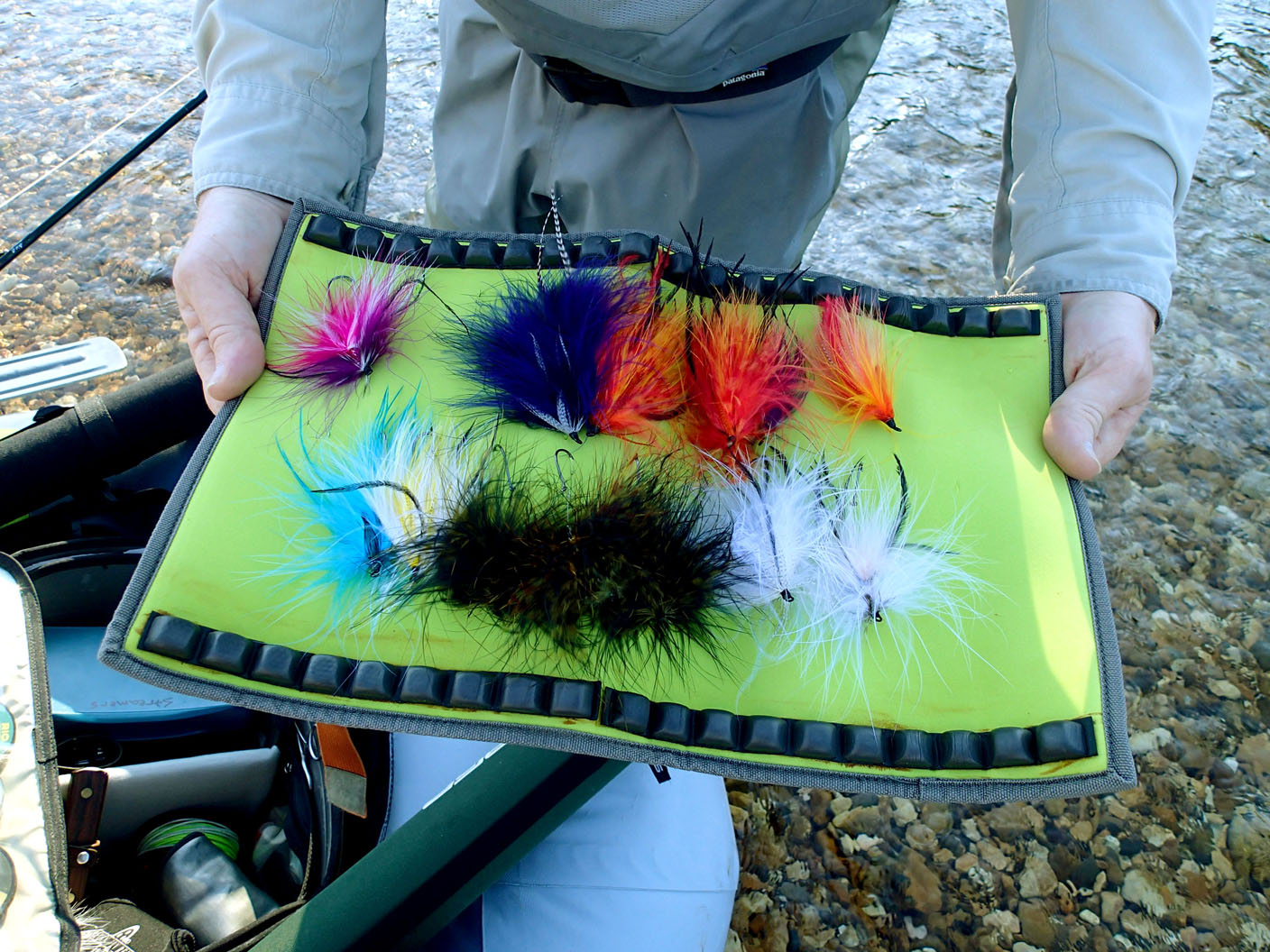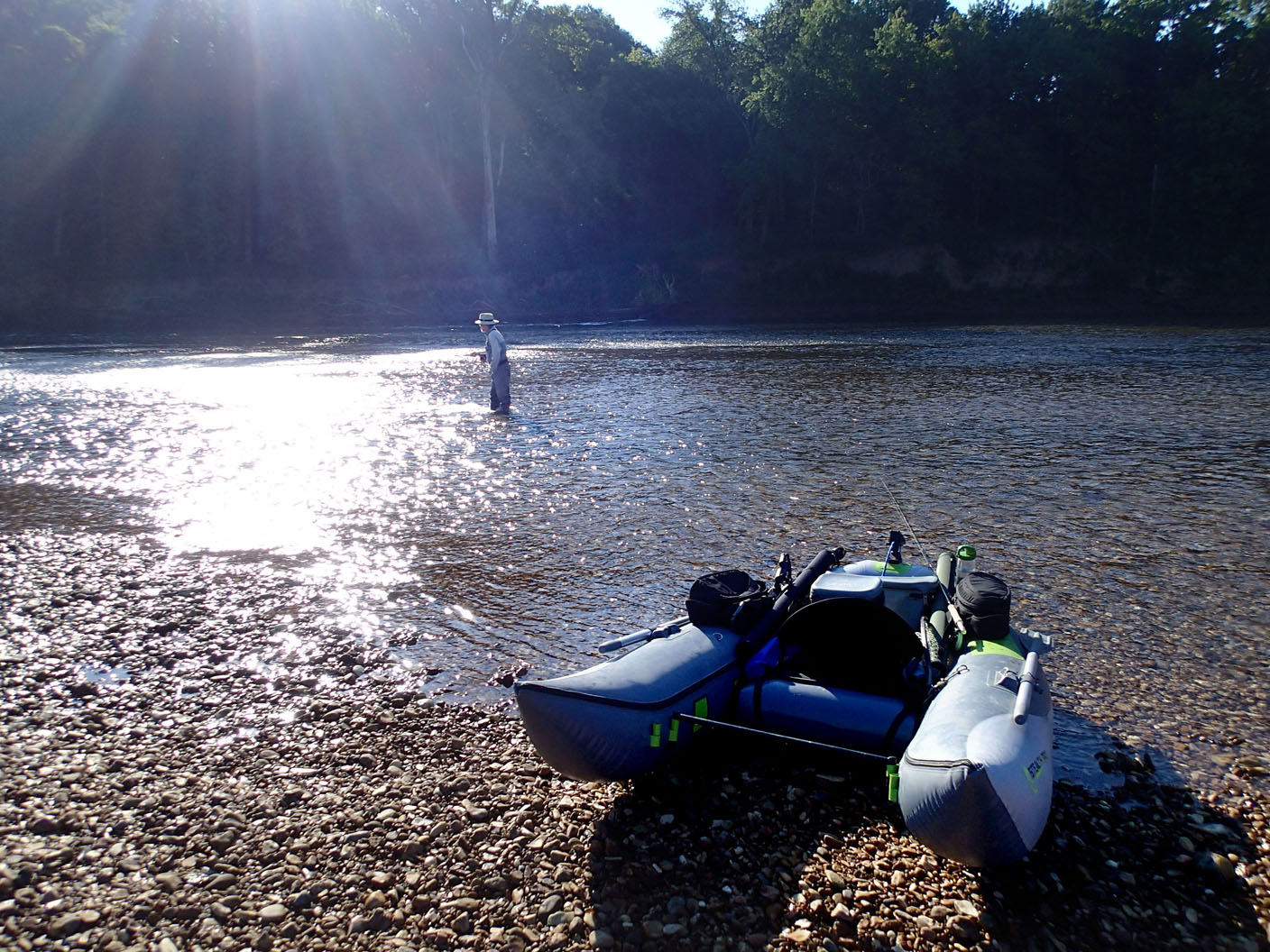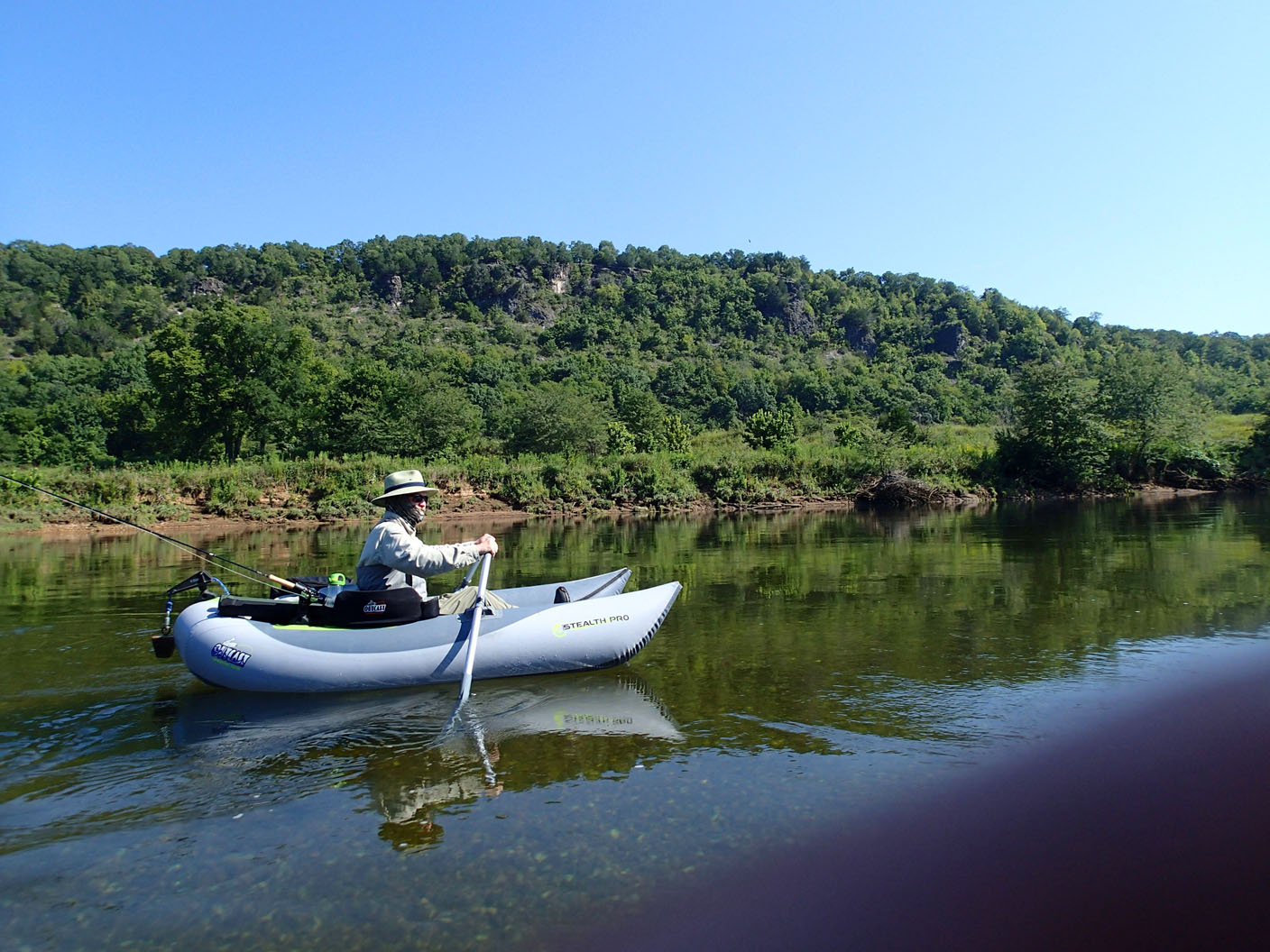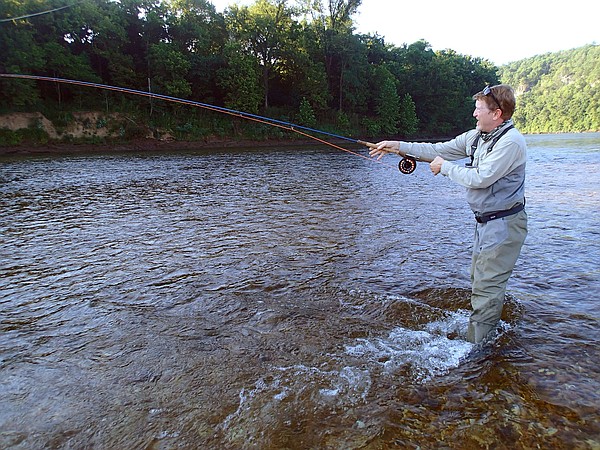Jason Harmon wouldn’t fish for trout with a 10-foot pole. He prefers a 20-footer.
Harmon, a fly fishing guide on the White River below Bull Shoals Dam, casts to a different drummer when he’s after rainbow or brown trout on his home waters where he lives at Buffalo City, south of Mountain Home.
Fly rods up to 22 feet long are a major component of spey casting. The technique was developed on the River Spey in Scotland and is used widely by wading anglers on rivers in the Pacific Northwest for salmon and steelhead fishing.
It’s ideal for fishing rivers with high, cut banks or other situations where a typical fly fishing back cast isn’t possible. Spey casting lets anglers fish fast, deep water with large flies.
Harmon learned spey casting when he lived in Seattle. It’s his favorite way to fish now on the White River below Bull Shoals Dam, also called Bull Shoals tailwater.
Harmon gave a lesson in spey casting to his fishing buddy during a fine August morning on the White River at Buffalo City. His boat of choice for floating the river is a compact inflatable solo rowboat that’s a cinch to maneuver. He had two boats rigged and ready at the boat ramp for the pair to hit the water.
Game plan was to float six miles downstream to the Arkansas Game and Fish Commission Shipp’s Ferry access. The anglers would beach boats along the way and do some spey casting for trout.
The float is a picturesque, delightful drift, which starts in the shadow of a long bluff that towers 200 feet or more above the clear water. Buffalo National River flows into the White River one-half mile downstream from the Buffalo City access. At the mouth of the Buffalo, Harmon beached his boat on a long gravel bar and lifted a 14-foot spey rod from a holder. Clad in chest wader, he walked knee deep into the gentle current.
Spey casting is similar to a normal fly-fishing roll cast, but with an extra step, as Harmon demonstrated. Using both hands, he lifts the rod so the tip is pointed toward the sky and slightly behind him.
That swings the fly line behind the angler, then the rod is snapped quickly downward so the fly line rolls across the surface and drops the fly into the water. It’s like an “energized” roll cast, Harmon said.
Another plus is that anglers can make very long casts with the technique, up to 60 feet or more. Some of Harmon’s casts reached almost to the other side of the wide White River.
To get the full picture, check out the video of Harmon’s demonstration included with this story.
The Bull Shoals tailwater is a sweet river for kayaking, canoeing or, as Harmon prefers, rowing. Current varies depending on the amount of water released from Bull Shoals Dam 35 miles upstream from Buffalo City.
The dam has eight hydroelectric generators compared to two at Beaver Dam. When all eight are cranking out the kilowatts, the river is high and swift and may be hazardous for floating. On this August day, the river was low, creating pleasant floating and fishing conditions.
The drift from Buffalo City to Shipp’s Ferry requires a vehicle shuttle, and Harmon arrange for VIP shuttle service. There at the ramp early in the morning was his wife, Laurell Matthews, and perhaps the most well-known turkey hunter and outdoor cook in Arkansas, Phyllis Speer, co-host of Cooking on the Wild Side seen frequently on Arkansas PBS. Her co-host on the show, John Philpot, lives in Springdale.
Harmon and Matthews are next door neighbors with Speer and her husband, Sam, at Buffalo City.
Harmon’s fishing pal was delighted to see Phyllis again. He had the high honor years ago of tagging along on a turkey hunt with Phyllis and her long-time friend, Zoe Caywood, when Caywood owned War Eagle Mill. Phyllis bagged a turkey 20 minutes into the hunt. The angler also took a Dutch oven cooking class with the two ladies and crossed paths with Phyllis now and then when she worked for Game and Fish.
The float to Shipp’s Ferry was divine, partly because there was little boat traffic this lovely Friday. That’s not the case on weekends in the summer, Harmon testified.
Outboard-powered fishing boats motoring up and down the river can be a hazard for paddlers, he said. Harmon is lobbying Arkansas legislators and Game and Fish for a motor-free zone on the White River between Buffalo City and the Cartney access, three miles downstream.
He realizes it’ll be an uphill fight. Meanwhile he’ll keep drifting downstream, spey casting for those hard-fighting trout.
 Spey casting lets Harmon use large fishing flies. (NWA Democrat-Gazette/Flip Putthoff
Spey casting lets Harmon use large fishing flies. (NWA Democrat-Gazette/Flip Putthoff Harmon rows a small inflatable pontoon boat Aug. 26 to get him down the river. (NWA Democrat-Gazette/Flip Putthoff)
Harmon rows a small inflatable pontoon boat Aug. 26 to get him down the river. (NWA Democrat-Gazette/Flip Putthoff) Harmon rows down the White River Aug. 26 to another fishing spot. (NWA Democrat-Gazette/Flip Putthoff)
Harmon rows down the White River Aug. 26 to another fishing spot. (NWA Democrat-Gazette/Flip Putthoff)
Credit: Source link






























